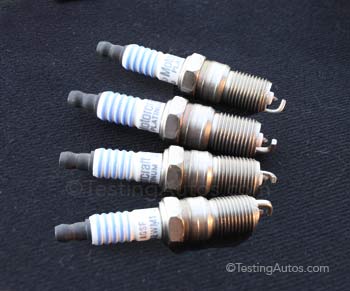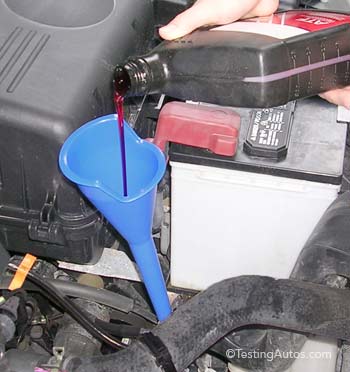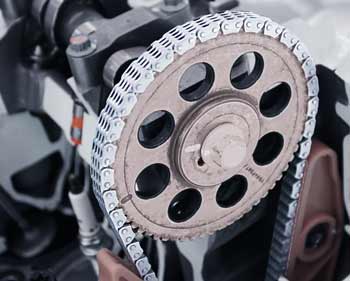Interference versus Non-Interference engine animation
In a typical internal combustion engine, valves are placed in the cylinder head and open towards the pistons.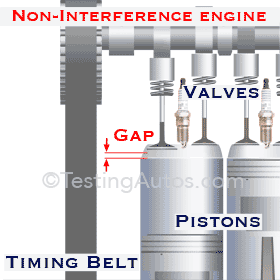 Non-interference engine animation.
Non-interference engine animation.To illustrate, we have created these two animations. In many non-interference engines, the pistons have valve relief areas for increased valve-to-piston clearance, see this photo.
Knowing the type of engine is important when it comes to issues related to a timing belt or timing chain. A timing chain or belt synchronizes the rotations of the engine crankshaft and the camshaft.
Because these two shafts are synchronized, each valve opens fully only when the piston of the same cylinder is not in the top position (called "top dead center" or TDC).
Interference engine:
If a timing belt or chain breaks or gets loose and skips a few teeth on a cam or crank gear, the rotation of the crankshaft and the camshaft is no longer synchronized.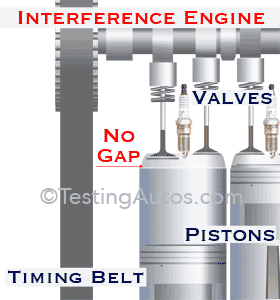 Interference engine animation.
Interference engine animation.If a timing belt or chain breaks in an interference engine, the first step is to assess the damage. Mechanics check for bent valves by performing a leak-down test of each cylinder or by checking the valve gaps. A very large valve gap usually points to a bent valve. Another way is to inspect the damage inside the cylinders visually. Many auto repair shops have a borescope tool. Mechanics insert a borescope camera through the spark plug hole to see the damage inside the cylinders on the borescope screen.
Repair options depend on the damage. If the pistons and cylinders are damaged, the engine must be rebuilt or replaced. Often, replacing the engine with a used unit is a cheaper option.
Non-interference engine:
In a non-interference (aka free-wheeling) engine, if a timing belt or chain breaks or skips, the gap between the pistons and valves prevents further damage.In most cases if a timing belt or chain breaks or skips, replacing the belt or chain and related hardware usually solves the problem. That said, we have seen rare cases where a broken timing belt resulted in bent valves in a non-interference engine.
This can happen if there is a thick layer of carbon deposits covering the bottom of the valves and the top of the pistons.
How do you find out whether you have an interference or non-interference engine?
Most modern cars have interference engines. The reason is that manufacturers strive to make the engines more efficient by increasing the compression ratio and make the valves open wider for more air flow.Advertisement
One way to find out the type of your engine is to ask your mechanic when doing your next oil change. Car makers include the information whether it's an interference engine or not in the service manuals for the technicians.
Another way is to find out the engine model (Wikipedia often has this information) and google whether this specific engine is an interference engine. Also check out this Timing Belt Replacement Interval Guide, courtesy of the Gates Corporation. In this guide, the interference engines are marked with the star sign.
